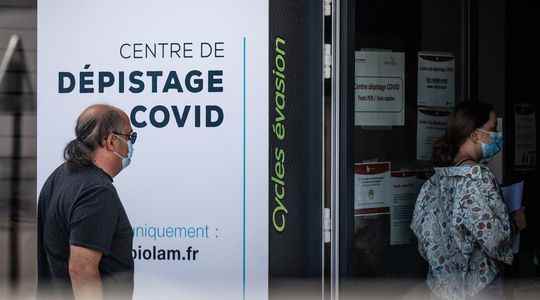This is the kind of prophecy that we would have liked not to come true. At the end of August, the new president of the committee for monitoring and anticipating health risks, Brigitte Autran, had warned of a rise in cases of Covid-19 at the end of the summer. “The most likely scenario is that of an epidemic peak at the start of the school year,” she said then.
This time the indicators are clear and seem to prove him right. With more than 17,000 daily cases as of September 13, the number of new Covid-19 contaminations is up 10% compared to last week and, a sign of a real increase in the virus on the territory, the positivity rate of tests is close to 16%. In recent days, the epidemic is accelerating, with a growth rate of cases exceeding 30%. “It is not an accidental rise, but a real trend which is spread over several days and which potentially marks the start of this eighth wave”, confirms the epidemiologist and professor of public health at the Ecole des Hautes Etudes en public health, Pascal Crépey.
As Brigitte Autran feared, the start of the school year seems to be partly driving the dynamics of this epidemic. The two previous years of the pandemic have taught us that the end of summer and the beginning of autumn are favorable times for new infections. But this time the recovery seems early. “We did not necessarily expect a restart from this period, in 2020 and in 2021 it was not the start of the school year which had been the trigger”, specifies the epidemiologist.
The unknowns pile up
Apart from a few Mediterranean or South-West departments, this recovery affects a large majority of the metropolitan territory and, because of this new mixing in the classrooms, it is through the youngest populations that these contaminations restart. In the 0 to 19 age group, the growth rate of new cases reached nearly 60% as of September 9. Thus, it is among the youngest schoolchildren that the incidence rate (the number of cases per week per 100,000 inhabitants) is the highest. In 3-5 year olds, this same incidence rate is 253, when the alert threshold remains set at 50…
How to explain this recovery? According to the count made by Public health France, the momentum remains attributable to BA.5, a sub-variant of Omicron, which has been dominant since the beginning of the summer in France and which was at the origin of the seventh wave in July. With its different evolutions, BA.5.1 / BA.5.2 / BA.5.2.1, it still represents the vast majority of new cases (95% of sequences according to the latest SPF report). However, it is difficult to say that this epidemic resumption is linked to reinfections by this BA.5 variant. “These infections are mainly linked to the time that has passed since the last infection with SARS-COV-2, or the last injection”, analyzes Professor Jean-Michel Pawlotsky, virologist, head of the biology center at Henri-Mondor hospital in Créteil , which points out that “there is not very solid information that BA.5 facilitates infections”.
It is difficult for the moment to know what the magnitude of this wave will be, as the unknowns accumulate on this variant. One of the main questions is that of the level of immune protection of the population. “The fact that this epidemic resumption comes so early shows that we did not have enough immunity to avoid a restart of new cases”, judge Pascal Crépey.
The hope of a receding epidemic
A finding that revives the argument of a new booster vaccination for the most fragile, but for the moment, the strategy stumbles on the fourth dose for the over 60s. About 30% of this target population received it. For the rest of the French, the previous waves by BA.5 but also by the earlier variants BA.4 or BA.2, provided a solid level of protection. The number of people hospitalized in intensive care due to Covid-19 currently remains at its lowest level since the start of the epidemic. However, critical care admissions have experienced a slight upturn in recent days, which could increase with the increase in the number of daily cases. “In view of the latest outbreaks of the virus, I have no major concerns for hospitalizations”, tempers for his part Professor Jean-Michel Pawlotsky, who insists on the importance of a booster vaccination campaign among patients. older.
Still, this return of the virus worries those who are on the front line facing the virus. The new variants and their ability to escape the immune system have made vaccination even less effective in immunocompromised people, and the synthetic antibodies supposed to protect them have largely lost their effectiveness against BA.5. “Fragile people are at the end of the day for these treatments”, recalls Denis Malvy, infectious disease specialist at the Bordeaux University Hospital and former member of the Scientific Council, who pleads to make this part of the population directly exposed to Covid-19 more visible.
New bivalent vaccines, as well as mucosal vaccines, give hope of seeing the epidemic decline even more in the months to come. A window that encourages us to redouble our efforts to eradicate the epidemic. This Wednesday, WHO Director Tedros Adhanom Ghebreyesus echoed this in a statement of rare optimism: “We have never been in a better position to end the pandemic”. And added: “We can all see the finish line, we are on the way to winning but it would really be the worst time to stop running”.
